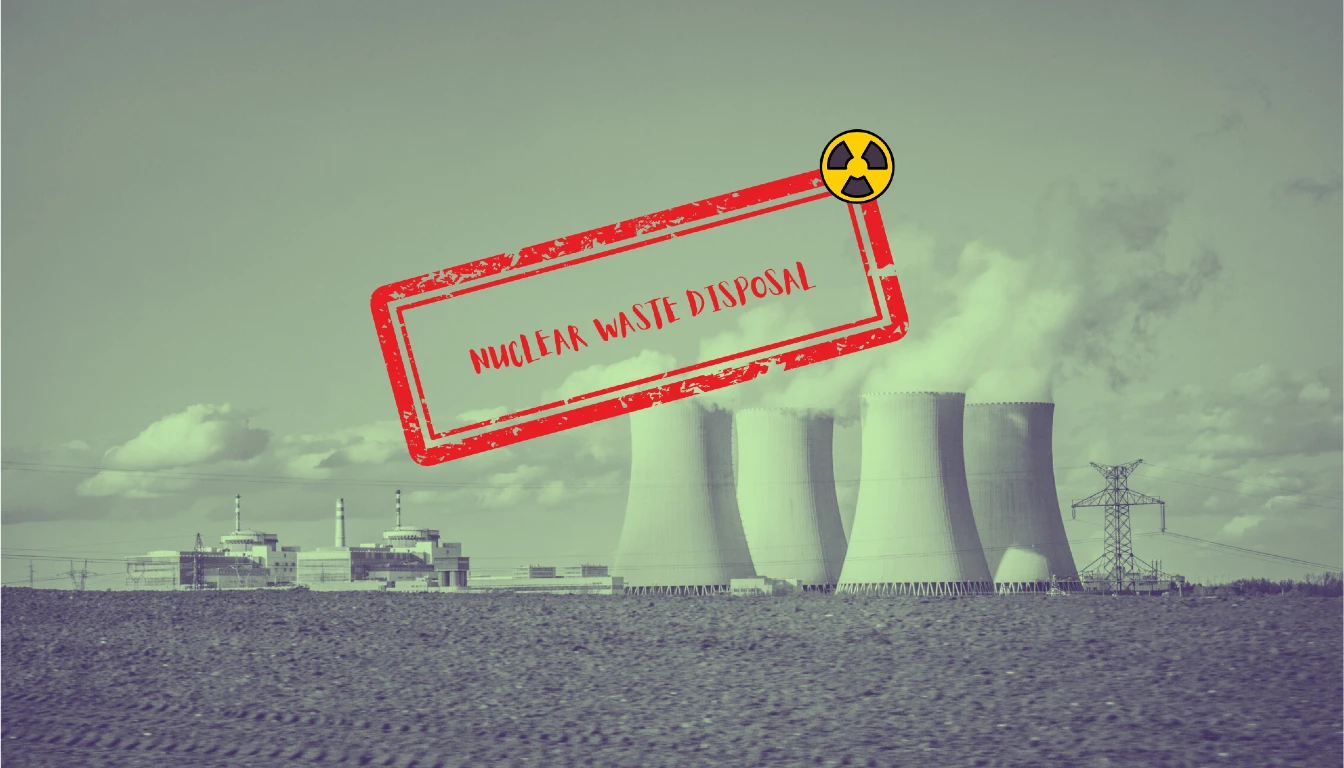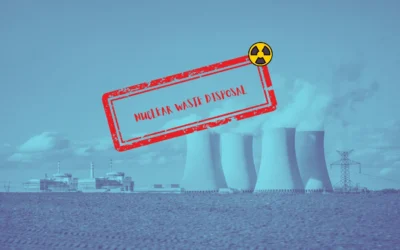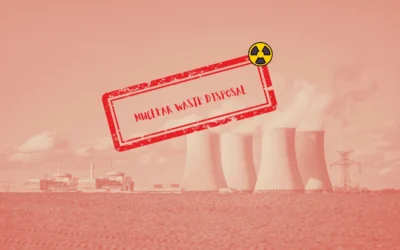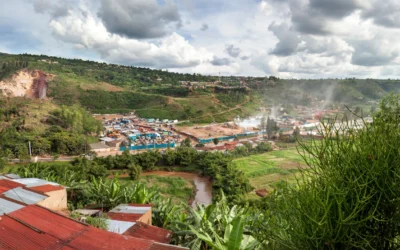Opinion by nuclear waste policy expert, Roy Payne
Global energy demand is expected to rise by more than 50% by 2050. The most optimistic forecasts estimate that renewable energy could meet about 65-80% of that increase. Thus, to bridge the gap, as fossil fuels are phased out, most countries are looking to nuclear power as a key low-carbon solution.
This could mean a doubling of the amount of nuclear generating capacity. But nuclear power has an achilles heel – waste that remains dangerously radioactive for a million years.
Managing dangerous wastes over an incomprehensibly-long period is the main concern of those opposed to the building of new nuclear power stations. It is an understandable public debate – are the shorter-term benefits of nuclear power worth the eons-long responsibility, risks, and costs of managing and disposing of the waste generated?
However, that concern masks a critical question, that even if we never again build a new nuclear power station, how do we dispose of, in an environmentally-sensitive and generationally-responsible way, the large volumes of nuclear waste which already exist – around 250,000 tonnes, currently stored on the surface at hundreds of sites spanning the planet.
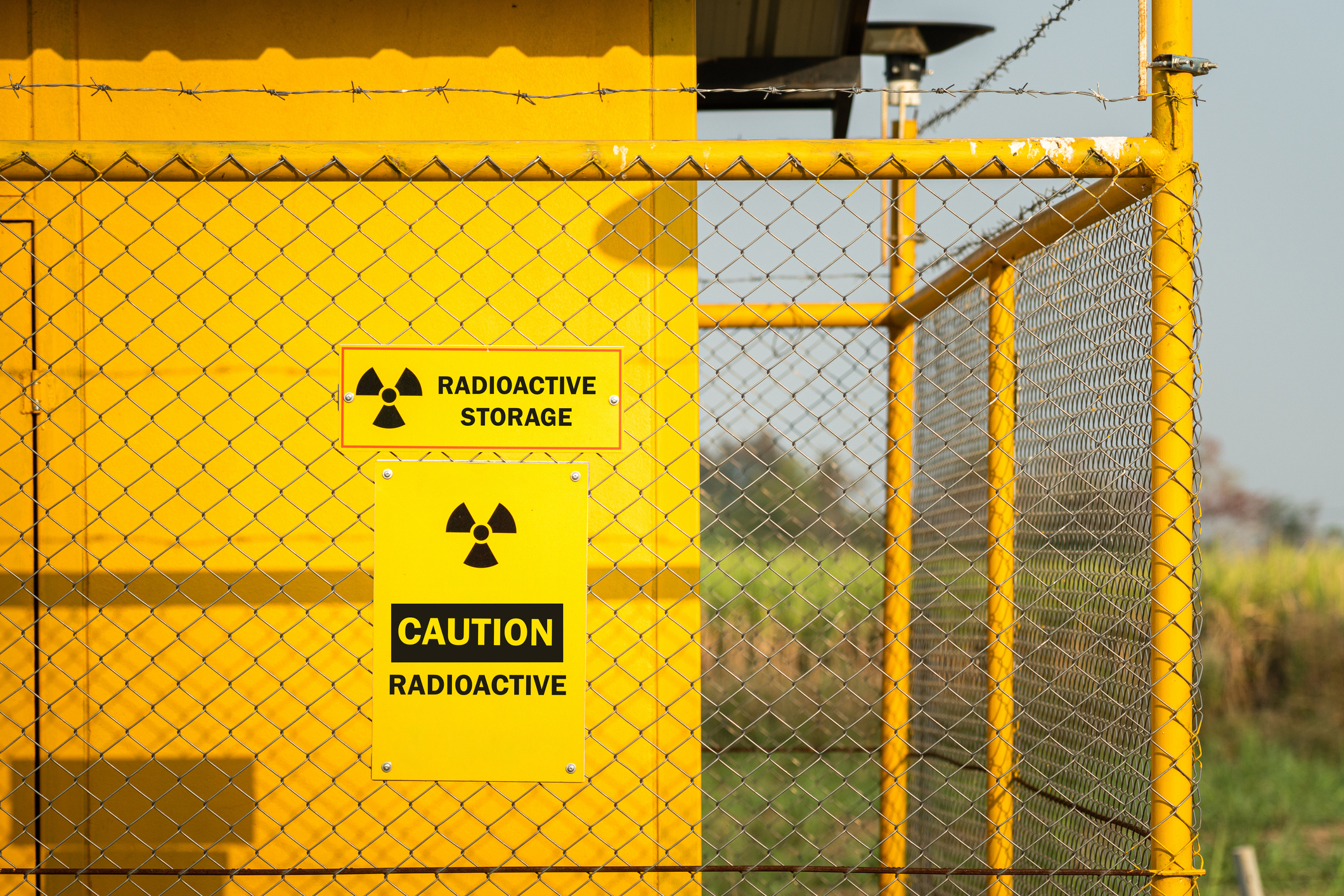
Regardless of whether the public support new nuclear plants, we still need to take steps to safeguard the planet and future generations from the legacy nuclear waste already accumulated. This is not a simplistic ‘pro’ or ‘anti’ nuclear argument, it is a discussion about responsible environmental and intergenerational stewardship of the nuclear waste that already exists.
And there is a solution on the table. One which every country with nuclear power is pursuing. One which has an international scientific consensus akin to that underpinning climate change. One which has been extensively researched for decades, and is considered, in environmental and intergenerational terms, as the “best available” (by the International Atomic Energy Agency – IAEA) or “least worst” (by the European Parliament, and German Green Party). Geological disposal.
Geological disposal is the interring of nuclear waste deep underground in a specialised facility, where, embedded in the deep bedrock, the waste can safely decay over the millennia, with no further threat to planetary life and surface environment. Geological disposal exploits both the natural radioactive protective qualities of deep rock, and that the rock has been, and will be, stable for billions of years – a duration of stability which neither nature nor human society can provide on the surface.
Explaining Nuclear Waste
Nuclear waste is categorised into different levels based on its radioactivity, the length of time it remains hazardous, and the potential risk it poses to human health and the environment.
- Very Low-Level Waste (VLLW)
- Description: Often exempt from regulations. It is typically generated from routine operations in nuclear facilities, eg construction debris.
- Storage and Disposal: Can be disposed of in regular landfills, provided it meets specific safety criteria.
- VLLW Summary: Very low radioactivity, typically disposed of in standard landfills.
- Low-Level Waste (LLW)
- Description: Does not require shielding during handling. It includes items such as contaminated clothing, tools, cleaning materials.
- Storage and Disposal: Can often be disposed of in near-surface disposal sites, such as shallow landfills.
- LLW Summary: Low radioactivity, relatively short-lived, easily managed.
- Intermediate-Level Waste (ILW)
- Description: Contains higher amounts of radioactivity than LLW and may require shielding during handling and storage. It includes materials like reactor components.
- Storage and Disposal: Requires deeper geological disposal or storage in specialised facilities.
- ILW Summary: Higher radioactivity, requires shielding, stored in specialised facilities.
- High-Level Waste (HLW)
- Description: The most dangerous and radioactive type of nuclear waste. It is primarily composed of the spent fuel from nuclear reactors or the by-products of reprocessing spent fuel. Can remain hazardous for a million years.
- Storage and Disposal: Must be stored in deep geological formations. HLW is typically stored in pools of water immediately after removal from reactors to cool, then moved to dry cask storage or geological disposal facilities for long-term management.
- HLW Summary: Very high radioactivity, generates heat, requires long-term management and geological disposal.
VLLW, LLW and ILW accounts for about 95% of the waste generated by nuclear plants, and 5% of the radioactivity. HLW is only about 5% of nuclear waste by volume, but accounts for 95% of the waste by radioactivity.
Alternatives have been considered. Dumping nuclear waste at sea has been internationally-banned since 1993, following the 1972 London Convention — for the fairly self-evident risks of irreversible marine pollution. Firing the waste into space is not a viable option given the rate at which rockets explode during or shortly after lift-off. Check out YouTube for videos of stunning pyrotechnics in the upper atmosphere when rockets explode – even more terrifying had that been a payload of dangerous nuclear waste being liberally showered upon us.
If we cannot dump at sea or expel into space, that only leaves land-based solutions. Of which there are two – underground or overground.
Currently nuclear waste is stored on the surface in canisters that can contain the radioactivity for up to a century. At best this is an interim, holding position.
The planet’s surface has changed considerably over the past million years, and will continue changing over the next million.
Even if we could technically monitor and manage the waste to continuously account for surface change, can we honestly rely upon human society’s stability and infallibility for the next 200,000 generations?
The planet’s deep bedrock seems a more stable and reliable partner in helping humans rectify a situation of our own creation.
There are legitimate concerns about the safety of geological disposal. The geology in which any facility is constructed needs to be carefully examined and assessed, to ensure its stability and impermeability.
However, the fears of “what if” something goes wrong underground regularly expressed by opponents of geological disposal need to be considered alongside the consequences of “what if” the same event occurred on the surface.
Opposition to geological disposal is primarily rooted in blocking new nuclear expansion. Critics are concerned that if they acquiesce to geological disposal, they will be ‘permitting’ new nuclear development, as many countries will only allow new nuclear build if there is a plan for the permanent disposal of the waste.
Meeting global energy demands for the remainder of this century and beyond, in a way that mitigates global warming and climate change, will require hard and difficult decisions. Nuclear power will almost certainly form part of the new energy mix.
But regardless of whether any new nuclear plants, are built, we will still need geological disposal for the voluminous amounts of waste that already exists, to protect the planet and future generations.

